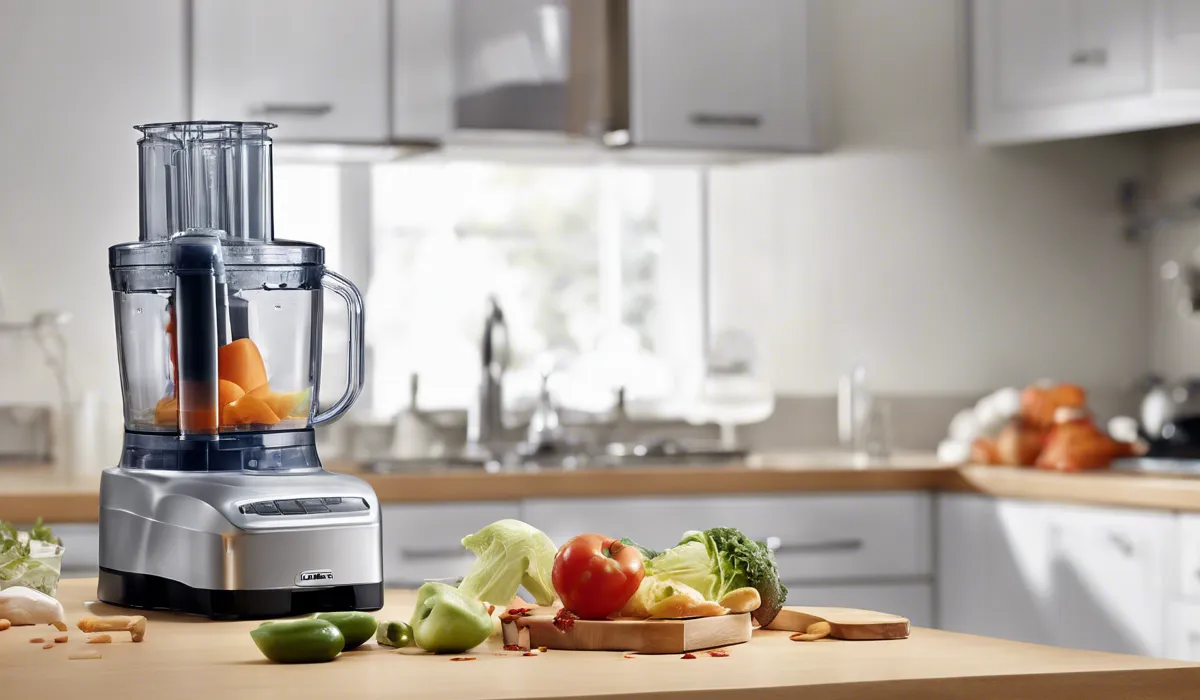Can Food Processor Go in Dishwasher? Safe Cleaning Tips!
Some food processor parts can go in the dishwasher, but check the manufacturer’s instructions first. Typically, the bowl, lid, and cutting blades are dishwasher-safe, while the base and motor should never be submerged or placed in a dishwasher.
Can Food Processor Parts Go in the Dishwasher?

General Dishwasher Safety of Food Processors
When it comes to cleaning kitchen appliances, convenience is key. Many wonder if food processor parts can handle the rigors of a dishwasher cycle.
Generally, some components of food processors are dishwasher safe, but it greatly depends on the manufacturer’s design and materials used.
Dishwashers can provide a thorough clean, but the high heat and intense water pressure can also damage sensitive parts if they’re not built to withstand such conditions.
Consulting the User Manual for Specific Models
Before tossing any part of your food processor into the dishwasher, it’s crucial to check the user manual.
Each model has its own set of guidelines on what can and cannot be washed in a dishwasher.
Manuals typically contain symbols or instructions that indicate the dishwasher safety of each part. This step ensures that you are not only cleaning your appliance correctly but also preserving its lifespan.
Breakdown of Food Processor Parts
Understanding the components of your food processor is the first step in knowing how to clean them.
The bowl, lid, blades, and feed tube pusher are common parts that may or may not be dishwasher safe.
The bowl is where ingredients are placed and processed, the lid secures the contents, blades are the cutting elements, and the feed tube pusher helps guide food into the processor safely.
Let’s delve into each part and their dishwasher compatibility in the following sections.
Determining Which Parts Are Dishwasher Safe

Impact of Material and Construction on Dishwasher Safety
The materials that make up food processor parts play a significant role in determining their dishwasher safety.
Plastic components may warp or crack if exposed to high heat, whereas metal parts could corrode or dull with repeated washes. Understanding the construction of these parts can help you make an informed decision on their care.
Common Dishwasher-Safe Parts of a Food Processor
Typically, the bowl, lid, and cutting blades can be placed in the dishwasher. These parts are often made to endure the heat and water pressure.
However, it’s important to place them securely in the dishwasher to prevent them from knocking against other items, which could lead to damage.
Parts Not to Place in the Dishwasher
The base of the food processor, which contains the motor, should never enter the dishwasher.
Electrical components and water do not mix, and submerging them could lead to a malfunction or complete breakdown.
The feed tube pusher, depending on its material, might also need to stay out of the dishwasher to prevent warping or cracking.
Tips to Prevent Damage During Dishwashing
To prevent damage, it’s best to place parts on the top rack of the dishwasher, select a gentle cycle, and avoid high-temperature settings. Ensuring that parts are not loosely placed can minimize the risk of them banging into each other and possibly breaking.
Proper Care and Maintenance for Non-Dishwasher Safe Parts

Step-by-Step Guide for Hand Washing Food Processor Parts
For parts that are not dishwasher safe, hand washing is the way to go. Begin by disassembling the parts and using a soft sponge or cloth to gently scrub them with warm, soapy water.
Rinse thoroughly to remove any soap residue, and dry with a clean towel to prevent water spots and rust formation on metal parts.
Best Practices for Maintaining Non-Dishwasher Safe Components
Maintaining the quality and longevity of these components involves regular cleaning after each use.
Avoid using abrasive scrubbers or harsh chemicals that could damage the surface. Instead, opt for mild detergents and ensure that all parts are completely dry before reassembling.
Cleaning Agents and Tools to Use
For effective cleaning, use a gentle dish soap that can cut through grease and food residue without being too harsh.
Non-abrasive sponges or brushes work well for scrubbing without scratching surfaces. For tight spaces and nooks, a small brush or toothpick can dislodge any trapped particles.
Storage Suggestions to Avoid Damage After Cleaning
After cleaning, store your food processor parts in a dry area to prevent mold and odors from developing. If possible, keep sharp blades in a protective case to maintain their edge and ensure safety.
Organize parts in a manner that prevents them from rubbing against each other, which could cause wear over time.
FAQs About Food Processor Dishwasher Safety
Can I put my food processor bowl in the dishwasher?
Yes, typically the food processor bowl is dishwasher-safe, but you should always check the manufacturer’s instructions to confirm.
Are the cutting blades of my food processor safe to wash in the dishwasher?
Usually, the cutting blades of a food processor are dishwasher-safe, but it’s important to consult the manufacturer’s instructions for specific guidance.
Can the lid of my food processor go in the dishwasher?
Most food processor lids are designed to be dishwasher-safe, but you should verify this by referring to the manufacturer’s guidelines.
Is it safe to put the base of my food processor in the dishwasher?
No, the base and motor of a food processor should never be submerged in water or placed in a dishwasher as it can damage the electrical components.
Should I remove the blades from the food processor before placing them in the dishwasher?
Yes, you should remove the blades from the food processor and secure them safely in the dishwasher to prevent injury and ensure they are properly cleaned.
Final Thoughts
Certain components of food processors, such as the bowl, lid, and cutting blades, are generally safe for dishwasher cleaning.
However, it’s essential to consult the manufacturer’s guidelines to ensure compatibility. The base and motor of the food processor must always be kept dry and should never be immersed in water or placed in a dishwasher.






